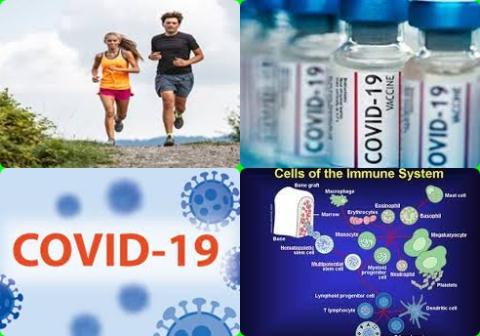
Objectives:
Regular physical activity is the prime modality for the prevention of numerous non-communicable diseases and has also been advocated for resilience against COVID-19 and other infectious diseases. However, there is currently no systematic and quantitative evidence synthesis of the association between physical activity and the strength of the immune system. Therefore, this review article has been conducted.
Does physical activity reduce risk of community-acquired infectious diseases and infectious disease mortality, enhance the first line of defence of the immune system and increase the potency of vaccination?
Study design:
This review article included 7 observational prospective cohort studies and 48 RCTs (including 6 studies focussed on vaccination) with 557,487 individuals.
20 RCTs were at moderate risk of bias and 12 at high risk because of poor randomisation, selection bias and poor reporting and management of missing data.
Results and conclusions:
The investigators found higher level of habitual physical activity was significantly associated with a 31% risk reduction of community-acquired infectious disease [hazard ratio = 0.69, 95% CI = 0.61 to 0.78, 6 studies, n = 557,487 individuals] and 37% risk reduction of infectious disease mortality [hazard ratio = 0.64, 95% CI = 0.59 to 0.70, 4 studies, n = 422,813 individuals].
The investigators found physical activity interventions, lasting on average a median 12 weeks and including aerobic (walking, running, cycling) or resistance or combined aerobic and resistance activity delivered 3-5 times per week for an average of 30 min at moderate to vigorous intensity, significantly resulted overall in higher concentrations of CD4 T cell helpers [32 cells/µL, 95% CI = 7 to 56 cells/µL, 24 studies, n = 1,112 individuals] and salivary immunoglobulin IgA [standardised mean difference = 0.756, 95% CI = 0.146 to 1.365, 7 studies, n = 435 individuals] and a lower concentration of neutrophils [704 cells/µL, 95% CI = 68 to 1340, 6 studies, n = 704 individuals] compared to controls.
The investigators found antibody concentration after vaccination is higher with an adjunct physical activity programme [standardised mean difference = 0.142, 95% CI = 0.021 to 0.262, 6 studies, n = 497 individuals].
The investigators concluded that regular, moderate to vigorous physical activity is associated with reduced risk of community-acquired infectious diseases and infectious disease mortality, enhances the first line of defence of the immune system and increases the potency of vaccination. Regular physical activity should be promoted in the general population to decrease the risk of community-acquired infection and infectious disease mortality, strengthen the potency of immunisation programmes and help lessen the impact of pandemics such as the recent COVID-19.
Original title:
Effects of Regular Physical Activity on the Immune System, Vaccination and Risk of Community-Acquired Infectious Disease in the General Population: Systematic Review and Meta-Analysis by Chastin SFM, Abaraogu U, [...], Hamer M.
Link:
https://link.springer.com/article/10.1007/s40279-021-01466-1
Additional information of El Mondo:
Find more information/studies on vaccination, physical activity and coronavirus right here.
Moderate-intensity activities are physical activities that get you moving fast enough or strenuously enough to burn off three to six times as much energy per minute as you do when you are sitting quietly or physical exercises that clock in at 3 to 6 METs.
Some examples of moderate-intensity physical activities are sweeping the floor, walking briskly, slow dancing, vacuuming, washing windows and shooting a basketball.
Vigorous-intensity activities burn more than 6 METs.